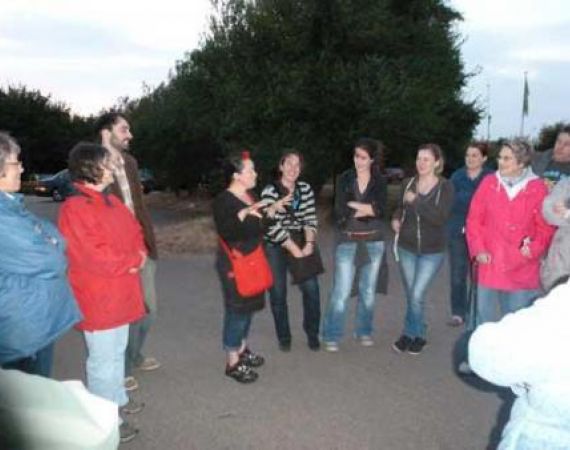Posted on Sun 7 Oct 2012
Bat Walk at Priory Park Bedford.

Bat Walk at Priory Park, Bedford
Normal.dotm
0
0
1
487
2780
Kathy Hinde
23
5
3414
12.0
0
false
18 pt
18 pt
0
0
false
false
false
/* Style Definitions */
table.MsoNormalTable
{mso-style-name:"Table Normal";
mso-tstyle-rowband-size:0;
mso-tstyle-colband-size:0;
mso-style-noshow:yes;
mso-style-parent:"";
mso-padding-alt:0cm 5.4pt 0cm 5.4pt;
mso-para-margin:0cm;
mso-para-margin-bottom:.0001pt;
mso-pagination:widow-orphan;
font-size:12.0pt;
font-family:"Times New Roman";
mso-ascii-font-family:Cambria;
mso-ascii-theme-font:minor-latin;
mso-fareast-font-family:"Times New Roman";
mso-fareast-theme-font:minor-fareast;
mso-hansi-font-family:Cambria;
mso-hansi-theme-font:minor-latin;
mso-ansi-language:EN-US;}
On October 9th, Bedfordshire Bat Group put on a Bat Walk, specially for the Vocal Migrations project, with Bedford Creative Arts. This was a really wonderful experience, and we were at capacity with 20 people attending – quite a few from the BCA choir too. At the start, Bob and Jude from BBG gave us a low down on what we would be dong, and where
we’d be going, but said they didn’t want to bombard us with information about bats before we set off – as it would be nicer to go out and discover and find things out by asking questions based on what we experienced as a group.
They handed out a lot of bat detectors, and explained that different bats ‘chirped’ at different frequencies, and that Bob would call out frequencies for us to tune to if he detected any – and we could also join in and call out frequencies we’d found bats on. This is one of the ways to know which Bat you are listening to… off we went, and Priory Park certainly did not disappoint! Half way along the lakeside path, just as it was getting dark, we tuned into a Soprano Pipistrelle (at 55KHz)- and we actually saw it flying around above is. It was amazing to hear the echo locating ‘pips’ get closer and closer together until we heard a ‘buzz’ sound as the Pipestrelle closed in on an insect… As we ventured further into the woods, we heard more Soprano Pips and Common Pipestrelles (45KHz) and a much bigger and lower frequency Noctule (20 KHz). The Noctule chirps were much louder and more spaced out – partly due to fact they fly much higher and have more space around them, so they don’t need to chirp so often for an ‘image update’ of their surroundings. We spent some time trying to find some Daubentons by going down to the water’s edge and shining a high powered torch just above the surface … but none came out to show themselves. On the walk back there were what seemed like hundreds of Pipestrelles, and the bat detectors for going crazy!. At one point Bob said he thought he heard a Serotin, but couldn’t be sure (that would have been a first at Priory Park) – it was a few days later that a Serotin was definitely identified there… so Bob has a pretty good ear for bat types! The Serotin has quite a particular rhythm – Bob describes it as a particularly ‘bad’ jazz drummer!... maybe I can use this idea in the piece…. ?
Most of us were using Heterodyne Bat detectors, which means you can listen to the bat chirps in real time – because rather than re-pitch the ultrasonic chirps, they use another, closely tuned soundwave to ‘interfere’ with the ultrasonic sounds to produce frequencies which are audible. These sound quite like modular synths, with a machine-like aesthetic… I’ll upload some from the walk soon… Bob had a ‘time expansion’ Bat detector which records the sounds and then pitches them down by slowing them down ten times. So, of course, it’s not possible to listen in real time, but you do get much a better idea as to what the sounds of the bats is actually like – almost like birds chirps, - more animal like. I’m hoping to get hold of some more time expansion bat calls to listen to.
Many many thanks to Bob and Jude, and BCA for a really amazing evening out Bat detecting… i hope to go again – as I have my own Bta detector, and now I think I’ll be much better at identifying different species, and also knowing which frequencies to tune into to find bats.